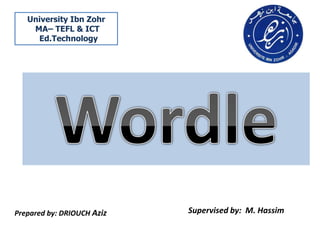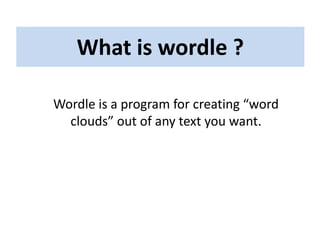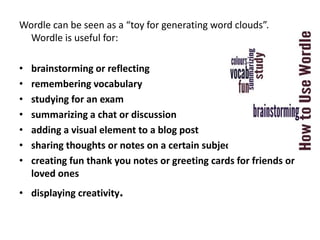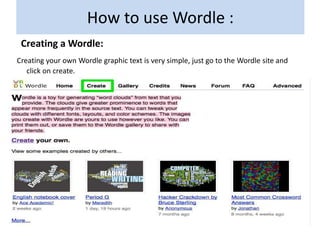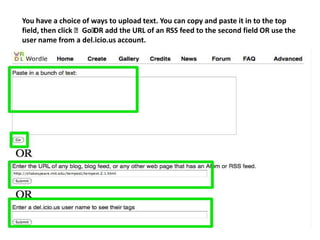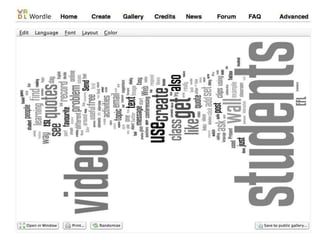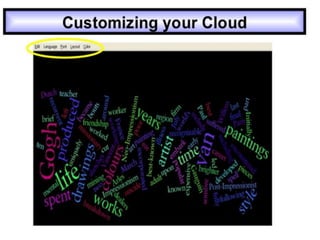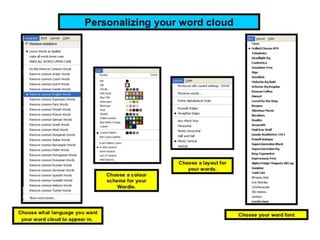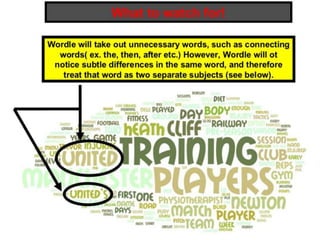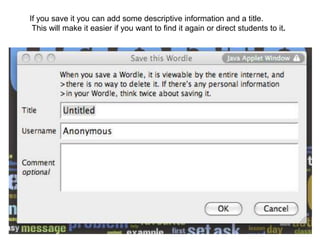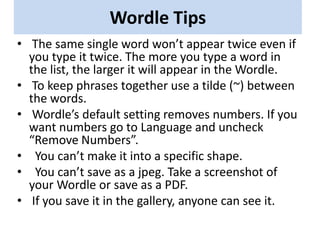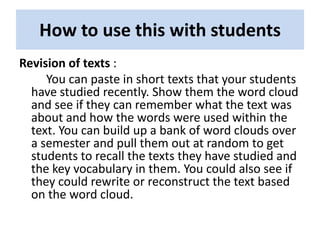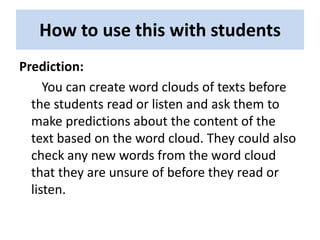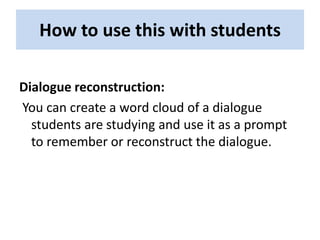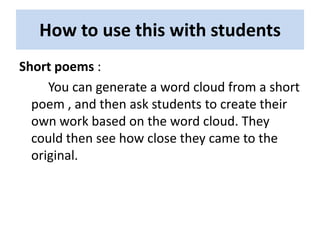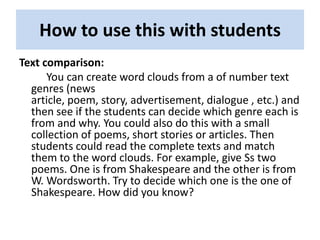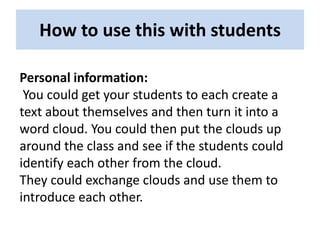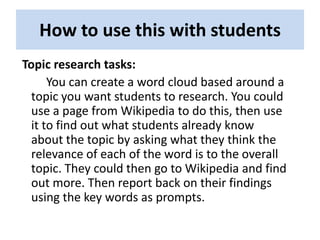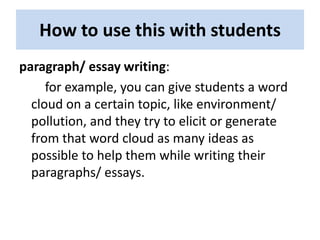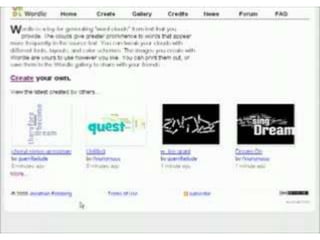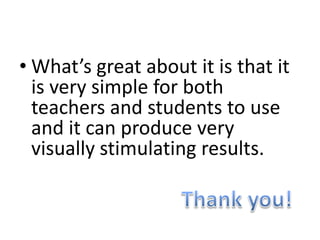Petcha kutcha presentation on wordle
- 1. University Ibn Zohr MAŌĆō TEFL & ICT Ed.Technology Prepared by: DRIOUCH Aziz Supervised by: M. Hassim
- 2. What is wordle ? Wordle is a program for creating ŌĆ£word cloudsŌĆØ out of any text you want.
- 3. Wordle can be seen as a ŌĆ£toy for generating word cloudsŌĆØ. Wordle is useful for: ŌĆó brainstorming or reflecting ŌĆó remembering vocabulary ŌĆó studying for an exam ŌĆó summarizing a chat or discussion ŌĆó adding a visual element to a blog post ŌĆó sharing thoughts or notes on a certain subject ŌĆó creating fun thank you notes or greeting cards for friends or loved ones ŌĆó displaying creativity.
- 4. How to use Wordle : Creating a Wordle: Creating your own Wordle graphic text is very simple, just go to the Wordle site and click on create.
- 5. You have a choice of ways to upload text. You can copy and paste it in to the top field, then click ╩╗Go╩╗ add the URL of an RSS feed to the second field OR use the OR user name from a del.icio.us account.
- 11. If you save it you can add some descriptive information and a title. This will make it easier if you want to find it again or direct students to it.
- 12. Wordle Tips ŌĆó The same single word wonŌĆÖt appear twice even if you type it twice. The more you type a word in the list, the larger it will appear in the Wordle. ŌĆó To keep phrases together use a tilde (~) between the words. ŌĆó WordleŌĆÖs default setting removes numbers. If you want numbers go to Language and uncheck ŌĆ£Remove NumbersŌĆØ. ŌĆó You canŌĆÖt make it into a specific shape. ŌĆó You canŌĆÖt save as a jpeg. Take a screenshot of your Wordle or save as a PDF. ŌĆó If you save it in the gallery, anyone can see it.
- 13. How to use this with students Revision of texts : You can paste in short texts that your students have studied recently. Show them the word cloud and see if they can remember what the text was about and how the words were used within the text. You can build up a bank of word clouds over a semester and pull them out at random to get students to recall the texts they have studied and the key vocabulary in them. You could also see if they could rewrite or reconstruct the text based on the word cloud.
- 14. How to use this with students Prediction: You can create word clouds of texts before the students read or listen and ask them to make predictions about the content of the text based on the word cloud. They could also check any new words from the word cloud that they are unsure of before they read or listen.
- 15. How to use this with students Dialogue reconstruction: You can create a word cloud of a dialogue students are studying and use it as a prompt to remember or reconstruct the dialogue.
- 16. How to use this with students Short poems : You can generate a word cloud from a short poem , and then ask students to create their own work based on the word cloud. They could then see how close they came to the original.
- 17. How to use this with students Text comparison: You can create word clouds from a of number text genres (news article, poem, story, advertisement, dialogue , etc.) and then see if the students can decide which genre each is from and why. You could also do this with a small collection of poems, short stories or articles. Then students could read the complete texts and match them to the word clouds. For example, give Ss two poems. One is from Shakespeare and the other is from W. Wordsworth. Try to decide which one is the one of Shakespeare. How did you know?
- 18. How to use this with students Personal information: You could get your students to each create a text about themselves and then turn it into a word cloud. You could then put the clouds up around the class and see if the students could identify each other from the cloud. They could exchange clouds and use them to introduce each other.
- 19. How to use this with students Topic research tasks: You can create a word cloud based around a topic you want students to research. You could use a page from Wikipedia to do this, then use it to find out what students already know about the topic by asking what they think the relevance of each of the word is to the overall topic. They could then go to Wikipedia and find out more. Then report back on their findings using the key words as prompts.
- 20. How to use this with students paragraph/ essay writing: for example, you can give students a word cloud on a certain topic, like environment/ pollution, and they try to elicit or generate from that word cloud as many ideas as possible to help them while writing their paragraphs/ essays.
- 22. ŌĆó WhatŌĆÖs great about it is that it is very simple for both teachers and students to use and it can produce very visually stimulating results.

